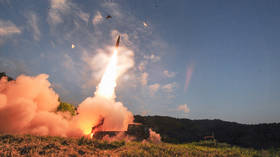North Korea explains its intercontinental ballistic missile test

North Korea says it test-fired an intercontinental ballistic missile (ICBM) on Thursday in order to prepare for “the long-standing confrontation” with Washington. It was the first time Pyongyang has launched a long-range missile of this type since 2017.
North Korean leader Kim Jong-un ordered the test of the missile, a Hwasong-17, because of the “daily-escalating military tension in and round the Korean peninsula” and the “inevitability of the long-standing confrontation with the US,” state-run news agency KCNA said.
The missile traveled 1,090km (677 miles) before landing in the Sea of Japan. Kim visited the launch site to personally oversee the test. The weapon adds to the country’s nuclear arsenal aimed at “humbling” Washington, KCNA said. The ICBMs are long-range weapons, capable of reaching the US.
UN Secretary General Antonio Guterres condemned the launch, saying it “risks a significant escalation of tensions in the region.” White House spokesperson Jen Psaki said the launch was “a brazen violation” of UN Security Council resolutions.
South Korea test-fired several missiles on Thursday in an apparent response to the North’s launch. President-elect Yoon Suk-yeol warned Pyongyang that “nothing can be gained from provocations.” The neighboring states restored direct communication lines last year in an attempt to ease tensions.
Talks regarding the North Korean nuclear program largely fell apart after a no-deal summit between Kim and then-US President Donald Trump in Hanoi, Vietnam in 2019.













